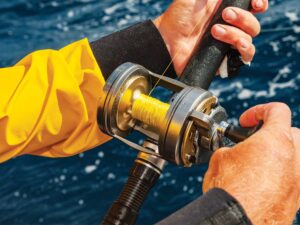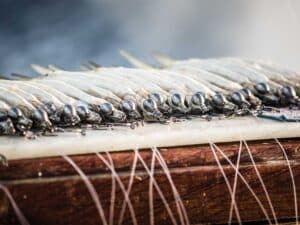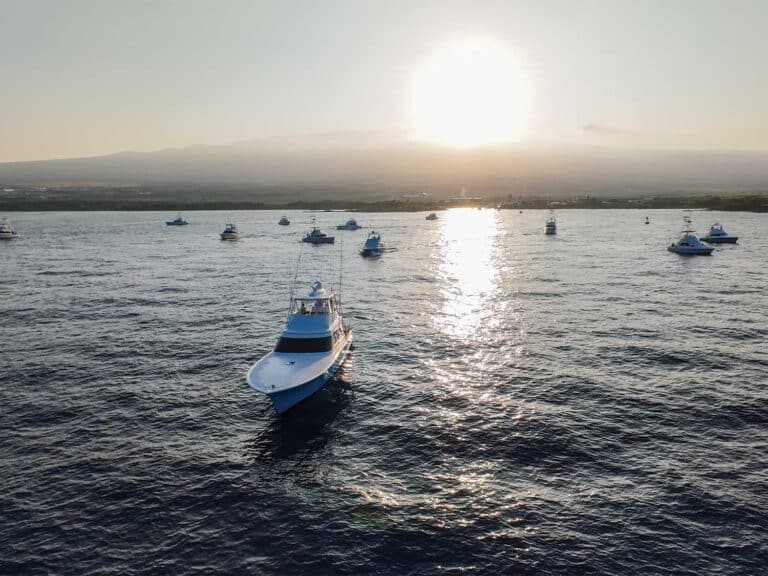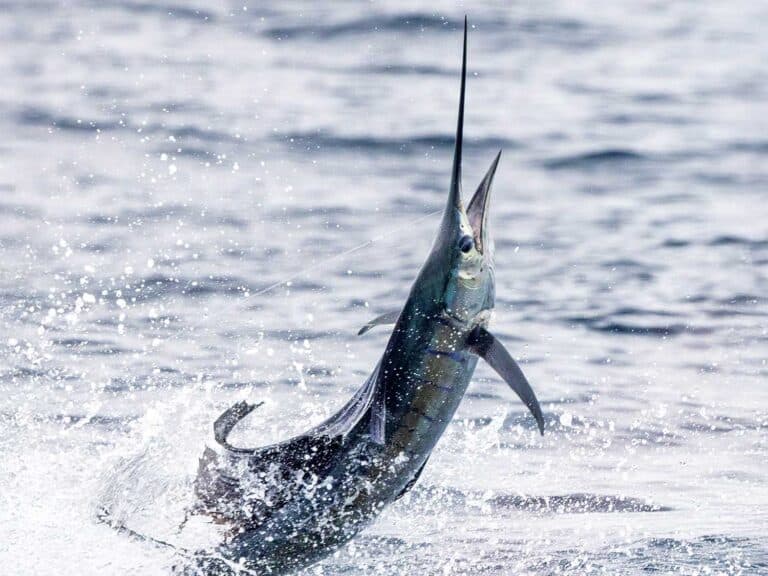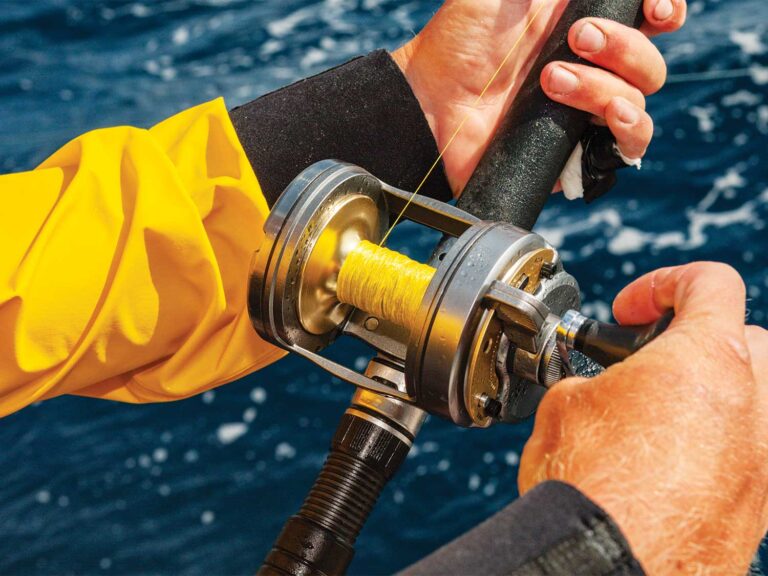Live-baiting for marlin can be a very productive and exciting way to fish when the conditions and location are right. The key is being prepared — you need to be rigged and ready to put out a live bait at a moment’s notice.
Start by making up a whole slew of leader and hook rigs. I like to rig up three different sizes of circle hooks on appropriately sized leader in 24-foot lengths, with bridles attached to the hook, all bagged in plastic baggies and ready to go.
You need to make up several sizes, because you don’t know what size bait you’re going to get. The basic rule of thumb is the bigger the bait, the bigger the hook. For my bridles, I like to use black 80-pound Dacron for smaller baits and 130-pound for big ones. The overall length of the bridle determines how far away the hook runs from the bait’s head once it’s rigged.
When using circle hooks, the trend these days is to have the hook riding about two to four inches from the bait’s head. This provides enough room to let the hook do its thing once it reaches the fish’s jaw hinge.
Finished bridle lengths for smaller baits (2 to 4 pounds) will be 8 to 11 inches, and 12 to 15 inches for big baits (5-plus pounders).
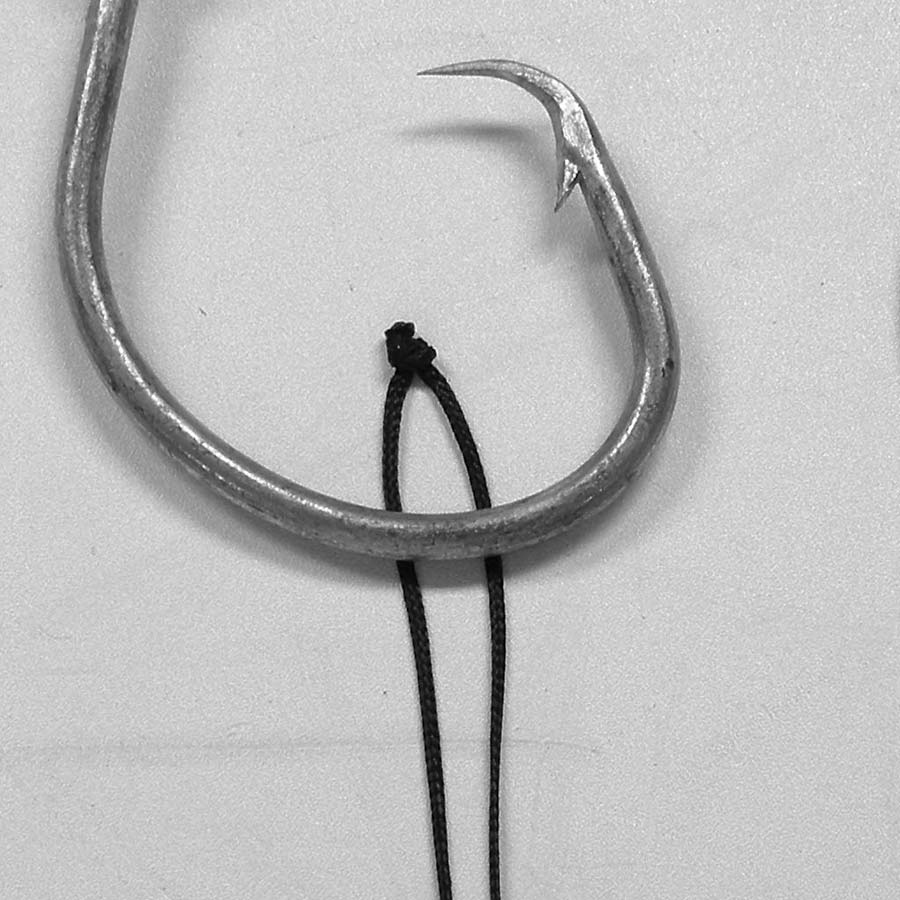
To make your bridles, start by cutting a length of Dacron that’s twice as long as you want your finished bridle to be. Double it over and tie an overhand knot with the two tag ends, leaving quarter- to half-inch tags sticking out. Grasp the two sides of the loop and tighten down the knot, pulling as hard as you can without pulling the knot through itself. Next, use a lighter and melt the remaining tag ends of the knot down to where they can’t pull through. Test the finished bridle by pulling on the loop as hard as you can. The knot should not slip or fail.
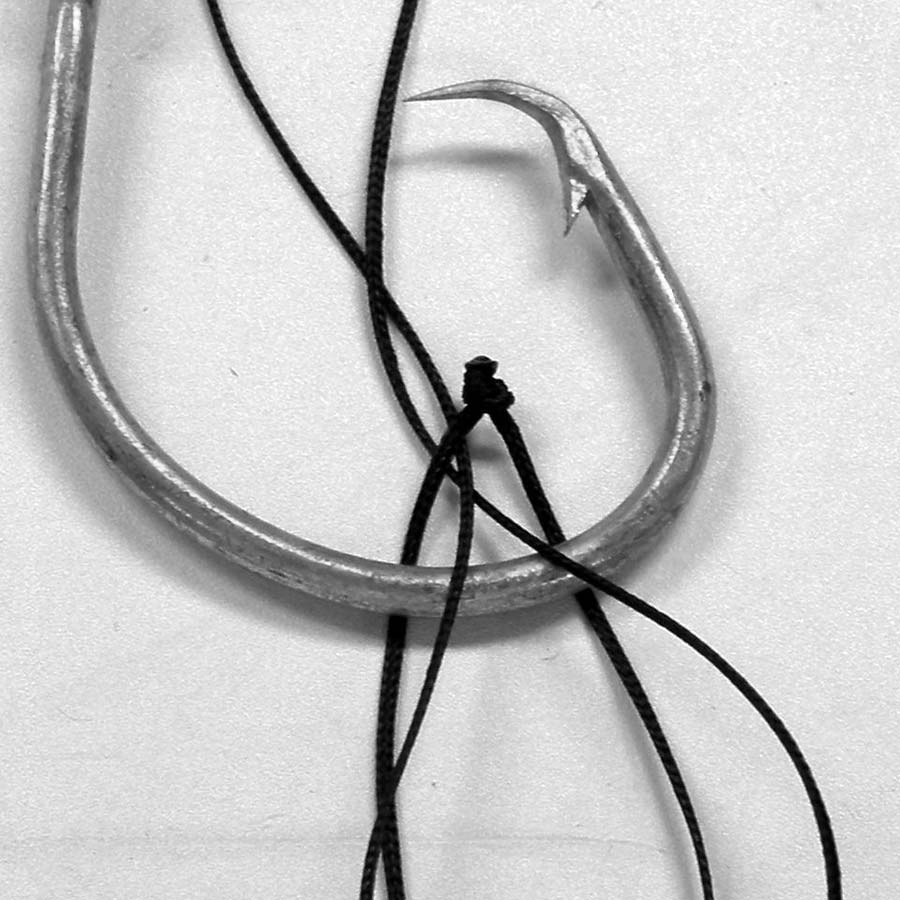
To attach the bridle to your hook, hold a bridle on the bottom side of the hook with the knot just above the bend of the hook, and then pass the loop end of the bridle around the hook and through the two sides of the bridle at the knot.
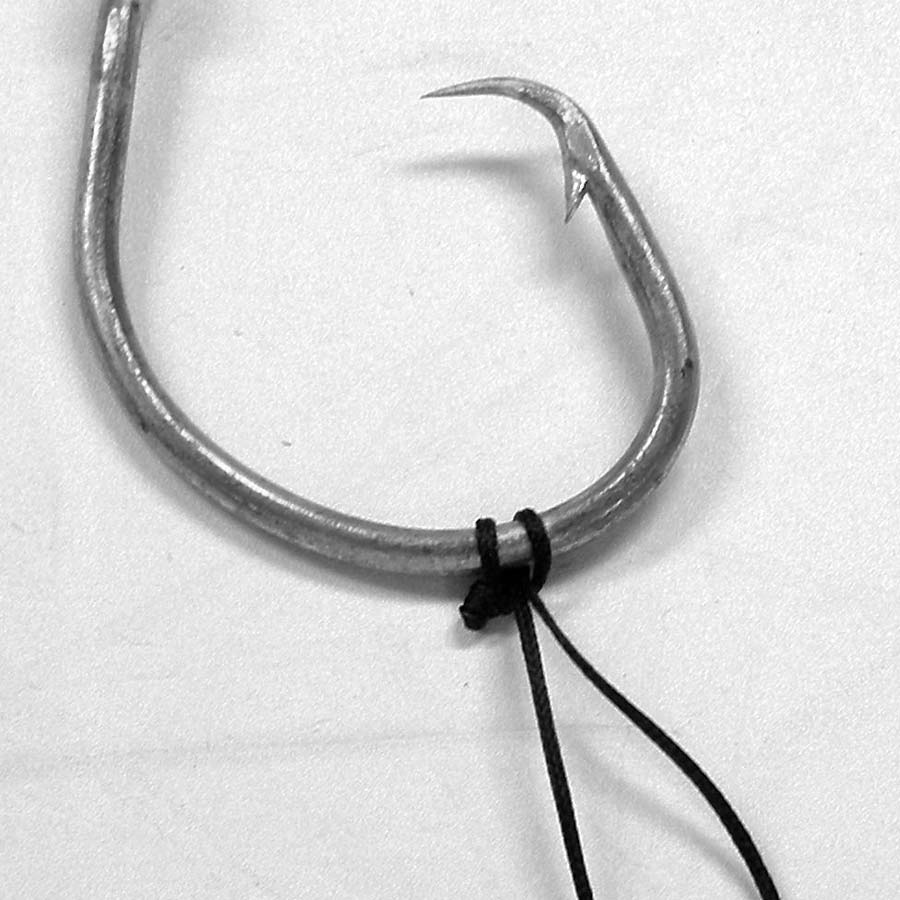
Cinch it down tight on the shank.
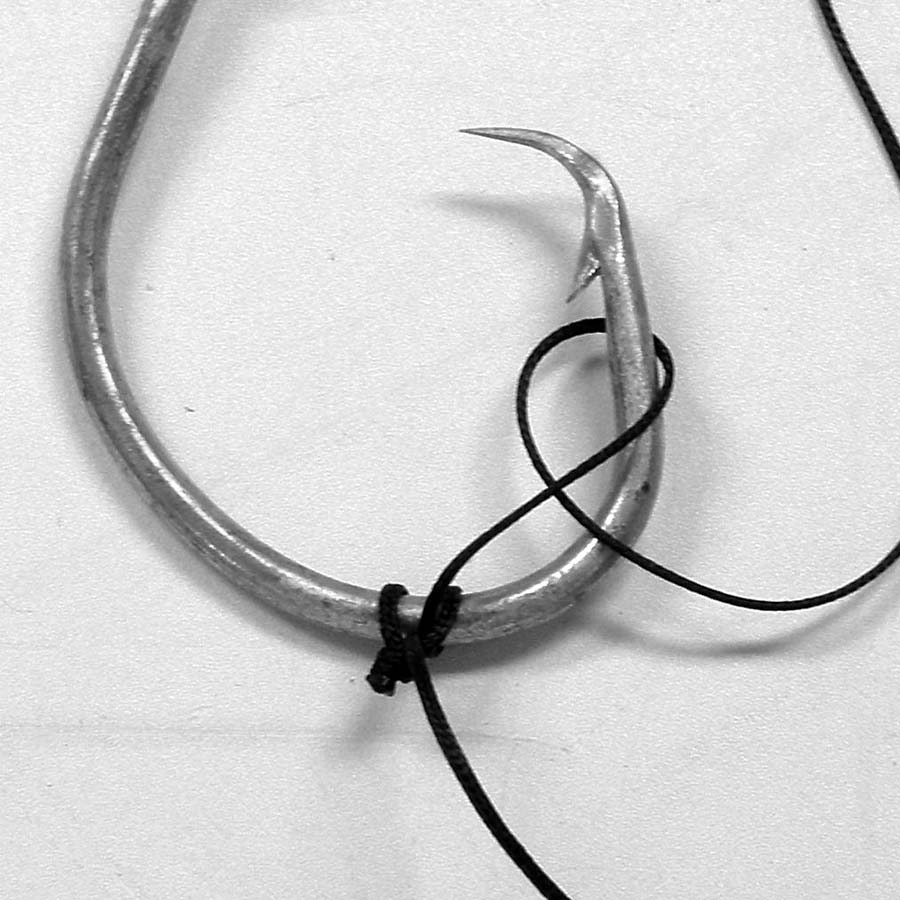
Now, with the side of the bridle closest to the hook point, make a half hitch around the hook point and pull it tight to the overhand knot. This keeps the knot from sliding up and down the hook shank.
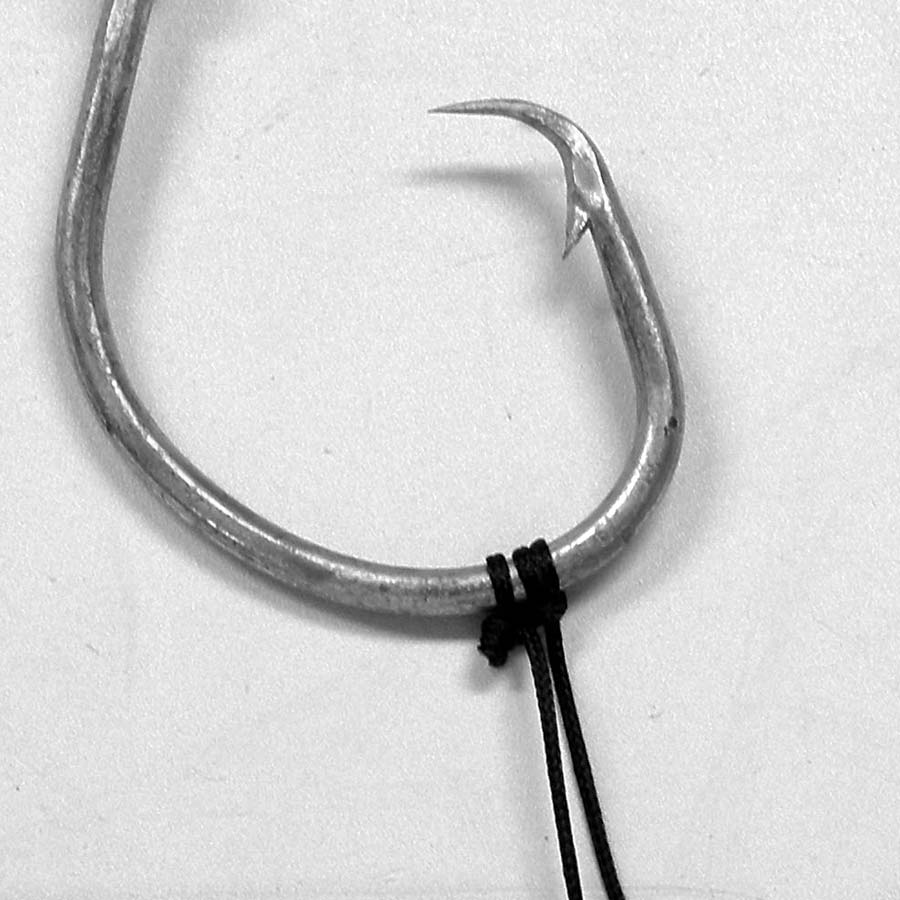
After you make up a bunch, place the finished rigs and leaders in plastic baggies and label them by hook and leader size. Now, when that nice, fat skippy comes over the rail, you’ll be able to get it back out in the water as soon as possible.
